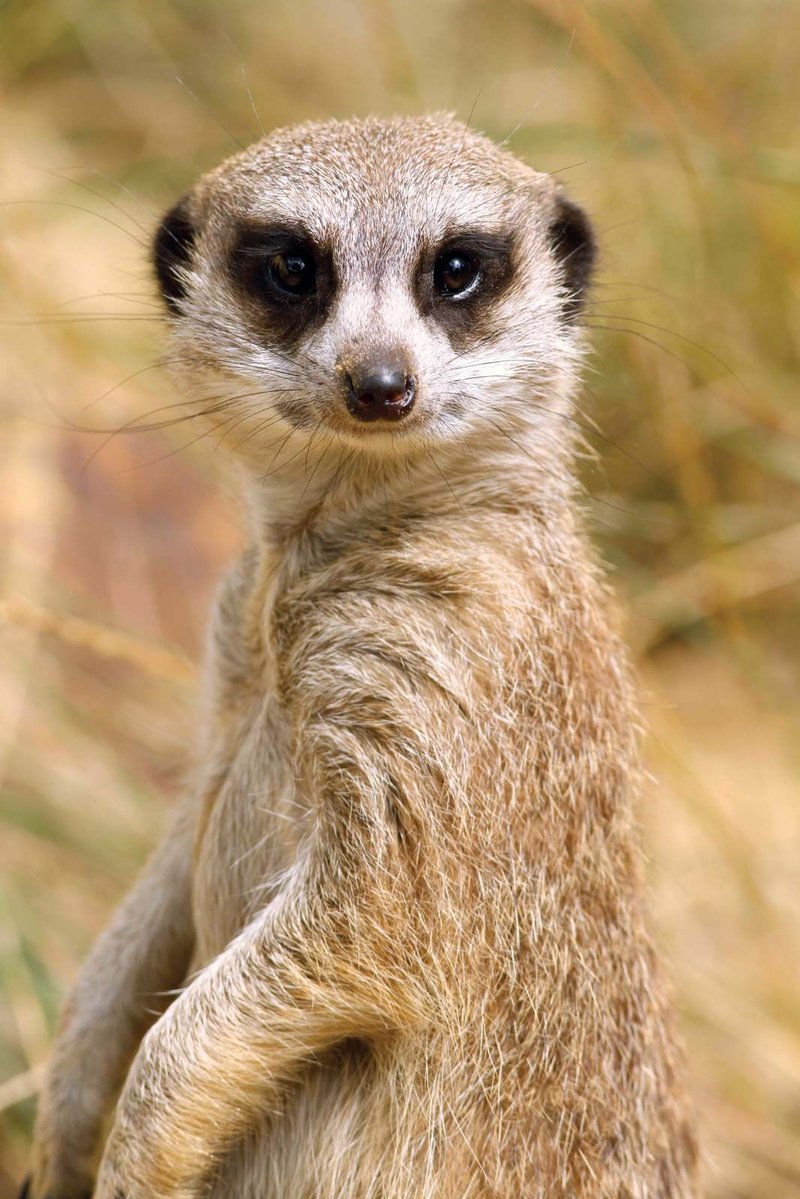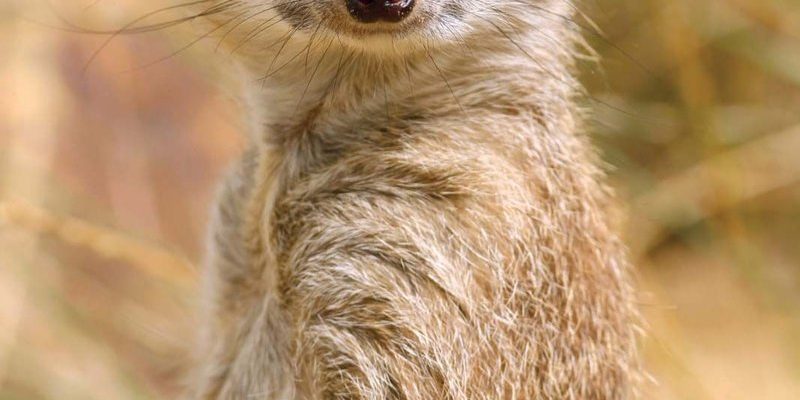
Meerkats are not just cute; they have evolved with a unique set of skills and social structures that help them conquer their dry, unforgiving habitats. Just like how we might bundle up in layers for winter or find the best place to set up camp on a hiking trip, meerkats have their own strategies for dealing with heat, food scarcity, and the ever-present danger from predators. Let me take you on a journey through their world and show you how they make it work.
Adaptations to the Environment
Meerkats stand out not just for their looks but also for their fascinating adaptations. Living in the Kalahari Desert means they have to deal with intense heat during the day and chilly nights. One of their coolest adaptations is their burrowing behavior.
These little creatures dig extensive networks of tunnels underground that help them stay cool during the scorching daytime heat. These burrows also provide them shelter from predators like eagles and jackals. Imagine having a secret hideout that’s not just cozy but also a safe spot from danger! During the night, they emerge to warm up in the cooler temperatures while still being alert for any threats.
But that’s not all. A meerkat’s body is also adapted to conserve water. They derive most of their moisture from their diet, which consists mainly of insects, fruits, and edible plants. It’s a bit like how we might snack on fruit for hydration—only for meerkats, it’s a matter of survival.
Social Structure and Cooperation
When you think of meerkats, you might picture them standing on their hind legs, looking out for one another. This behavior isn’t just for show; it’s a reflection of their impressive social structure. Meerkats live in groups called mobs, which can consist of up to 50 individuals!
This close-knit community is essential for survival. Mobs work together in various ways, such as taking turns being lookout sentinels. While one meerkat surveys the landscape for threats, others can forage and play, making the most of their limited time. It’s a little like a team at work, where everyone has a role to play, and cooperation is key.
In addition to lookout duties, meerkats also help each other with grooming and caring for young ones. This social behavior helps strengthen their bonds and ensures that the group remains united. Honestly, who wouldn’t want to be part of such a supportive crew?
Foraging Strategies
When it comes to finding food, meerkats have some impressive tactics up their furry sleeves. Foraging is a crucial activity, and it requires teamwork and keen hunting skills. These little creatures primarily eat insects, but they can also indulge in small animals, roots, and fruits when available.
A common sight is a meerkat flipping over rocks or digging in the sand to uncover tasty treats. This behavior is almost like a treasure hunt, where the reward is a nutritious meal. Honestly, watching them dig is delightful—it’s like they’re playing hide and seek with their food!
Moreover, meerkats often share their findings with one another. If one member of the mob uncovers a particularly juicy grub or a stash of seeds, it’s not uncommon for the rest of the group to benefit from this discovery. This sharing behavior not only helps them survive but also strengthens their social bonds. They’re truly a team, working together in sometimes challenging conditions.
Predator Awareness and Defense Mechanisms
Let’s face it—living in the wild means constant vigilance. Meerkats are adept at spotting potential threats, and their survival heavily relies on maintaining a watchful eye. They have sharp eyesight and can detect movement from great distances, which is essential in a land where predators lurk around every corner.
When danger approaches, meerkats have a unique alarm system. They communicate through a variety of vocalizations, alerting their mob to the type of threat. For example, they have different calls for aerial predators versus ground threats. It’s like having a dedicated emergency broadcast system within the group!
In addition to their alertness, meerkats have a few tricks up their sleeve. If a predator gets too close, they can quickly dive into their burrows, disappearing from sight. This rapid escape plan is crucial when dealing with danger, allowing them to evade attacks. Imagine how important it is to have a quick exit strategy when the stakes are high!
Water Conservation Techniques
Surviving in the desert means water is often scarce, and meerkats have developed remarkable ways to cope. They have a diet that provides most of the moisture they need, but they also rely on efficient water conservation methods to endure long dry spells.
For one, meerkats are adept at minimizing water loss through their skin and respiratory systems. It’s like how you might try to stay hydrated during a long hike by sipping water regularly rather than gulping down a whole bottle at once. They also tend to be more active during cooler parts of the day, which helps them avoid losing precious moisture through sweat.
When it comes to drinking, if they do come across water sources, meerkats will take full advantage. They’re not picky, either; they may drink from puddles or water holes left behind after rain. However, they must always stay alert, as these waters can also attract predators.
Challenges and Threats to Survival
Despite their impressive adaptations, meerkats face numerous challenges in their environment. Climate change, habitat loss, and predation are just a few threats that can impact their survival. The Kalahari Desert, once a safe haven, is becoming harsher due to rising temperatures and erratic rainfall patterns.
As their burrows become less hospitable, meerkats may find it harder to locate food and water, making survival more difficult. Additionally, they are vulnerable to predators like snakes, hawks, and larger mammals, which can swiftly diminish their populations if conditions become too dire.
The good news is that meerkats embody resilience and adaptability. They’re constantly learning from their environment and adjusting their behaviors. Conservation efforts aimed at protecting their habitats are vital in ensuring these remarkable creatures continue to thrive despite the challenges ahead.
The Importance of Meerkats in Ecosystems
Finally, let’s discuss why meerkats matter beyond their cuteness. As a species, they play a critical role in their ecosystem. By controlling insect populations, they help maintain the ecological balance. Too many insects can lead to problems in the ecosystem, affecting plants and other animals.
Moreover, their burrowing habits aerate the soil. When meerkats dig, they create channels for water and nutrients to reach deeper soil layers. This process not only benefits their own group but also supports the broader environment, allowing other species to thrive.
In a nutshell, meerkats contribute significantly to their ecosystems, highlighting the interconnectedness of nature. Protecting their habitats ensures the health of various plants and animals, making it a win-win for everyone involved.
In conclusion, meerkats are a great example of how life finds a way, even in the harshest conditions. Their unique adaptations, social structures, and clever foraging techniques are all keys to their survival. So, next time you see a meerkat, remember, there’s a lot more than meets the eye! They’re not just adorable critters; they’re survivors in the truest sense.

